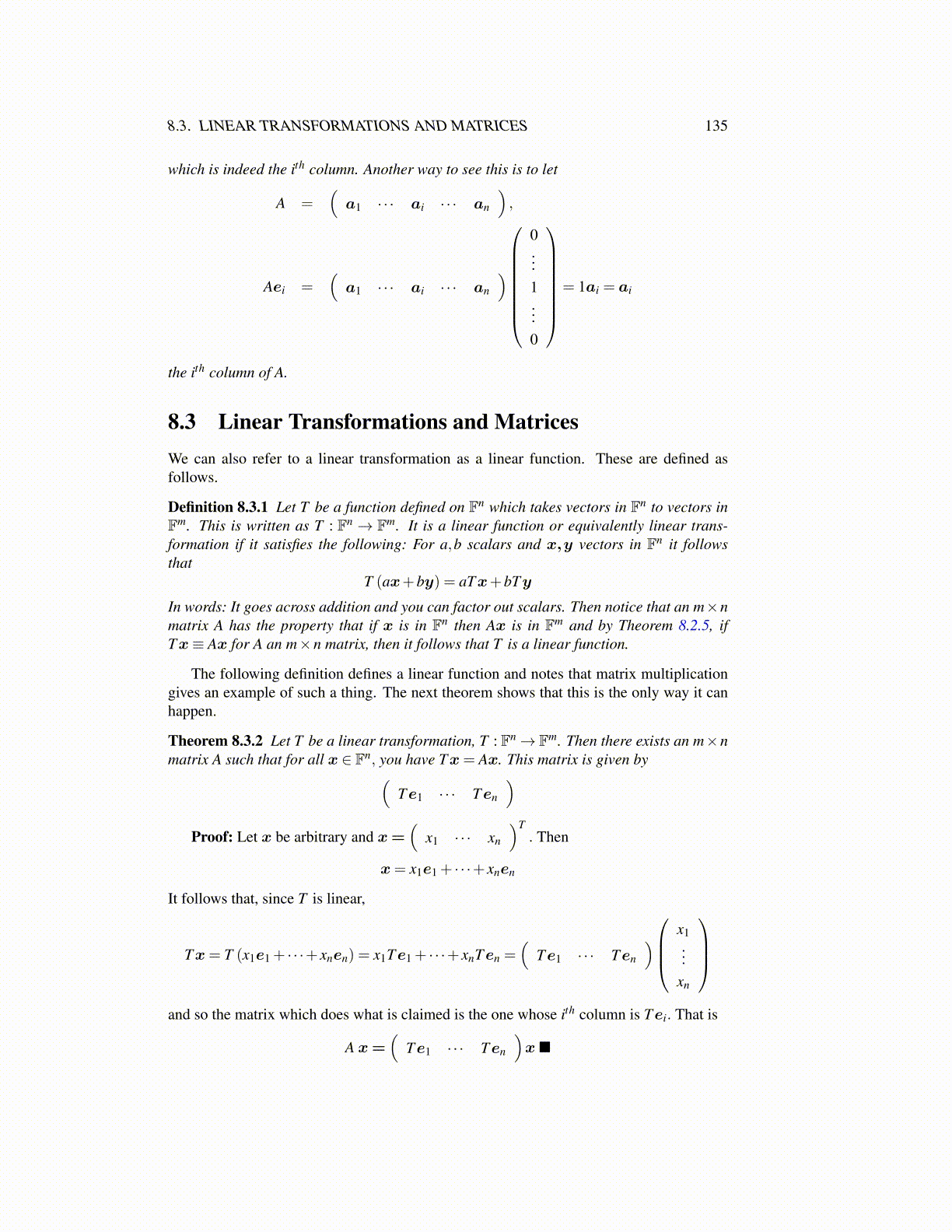
8.3. LINEAR TRANSFORMATIONS AND MATRICES 135
which is indeed the ith column. Another way to see this is to let
A =(
a1 · · · ai · · · an
),
Aei =(
a1 · · · ai · · · an
)
0...1...0
= 1ai = ai
the ith column of A.
8.3 Linear Transformations and MatricesWe can also refer to a linear transformation as a linear function. These are defined asfollows.
Definition 8.3.1 Let T be a function defined on Fn which takes vectors in Fn to vectors inFm. This is written as T : Fn → Fm. It is a linear function or equivalently linear trans-formation if it satisfies the following: For a,b scalars and x,y vectors in Fn it followsthat
T (ax+by) = aTx+bTy
In words: It goes across addition and you can factor out scalars. Then notice that an m×nmatrix A has the property that if x is in Fn then Ax is in Fm and by Theorem 8.2.5, ifTx≡ Ax for A an m×n matrix, then it follows that T is a linear function.
The following definition defines a linear function and notes that matrix multiplicationgives an example of such a thing. The next theorem shows that this is the only way it canhappen.
Theorem 8.3.2 Let T be a linear transformation, T : Fn→ Fm. Then there exists an m×nmatrix A such that for all x ∈ Fn, you have Tx= Ax. This matrix is given by(
Te1 · · · Ten
)Proof: Let x be arbitrary and x=
(x1 · · · xn
)T. Then
x= x1e1 + · · ·+ xnen
It follows that, since T is linear,
Tx= T (x1e1 + · · ·+ xnen) = x1Te1 + · · ·+ xnTen =(
Te1 · · · Ten
)x1...
xn
and so the matrix which does what is claimed is the one whose ith column is Tei. That is
A x=(
Te1 · · · Ten
)x■